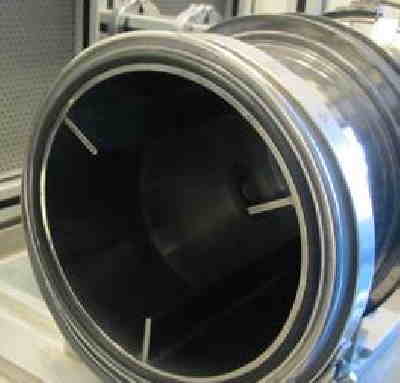Recent EC legislation has drawn substantial attention to workplace exposure and dustiness index measurements related to materials containing nano particles. Accordingly, ECHA and REACH are more and more requiring dustiness information on materials that (potentially) contain nano materials: the dustiness index. Not only information on airborne dust particles with aerodynamic diameter smaller than 10 micrometers is needed but in many cases also quantitiative information on the presence of nano particles in the dust fractions is required.
Previous dustiness potential measurements like the Heubach methodology (DIN 55992) and EN 15051-2 Rotating Drum and EN 15051-3 Continuous Drop methodology primarily focused on airborne dust particles in the micrometer size range.
The standard EN 17199-4 describes the so-called Small Rotating Drum methodology. This measurement set-up is equipped with a small cyclone to collect the respirable fraction of airborne dust particles and dedicated nano sensors are used to obtain information on the presence of nano particles in the airborne dust released. To this end, a condensation particle counter (CPC) and an electrical low-pressure impactor (ELPI or MOUDI) are included in the set-up. The condensation particle counter provides quantitative information on the nano particle number concentration. The electrical low-pressure impactor delivers information on the time-averaged number-based nano particle size distribution. The respirable fraction is collected via a cyclone and the weight percentage of particles with an aerodynamic diameter smaller than 10 micrometers is determined gravimetrically.
In this way in one set-up information can be obtained on the micrometer-based dustiness fraction and the nano particle contribution to the airborne dust fraction.

- Powder Flow and Ring Shear Testing
- Unconfined powder flow testing
- Powder Caking by Uni-axial compact strength testing
- Powder stickiness measurement
- Heubach and EN 15051 dustiness analysis
- Attrition and abrasion of particles, granules and tablets
- Segregation testing of powders and solids
- EN 17199-4 Dustiness index and nano particles



